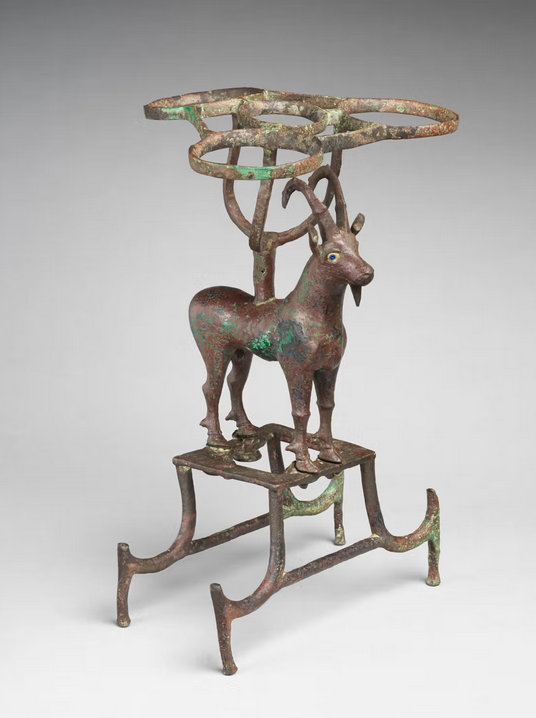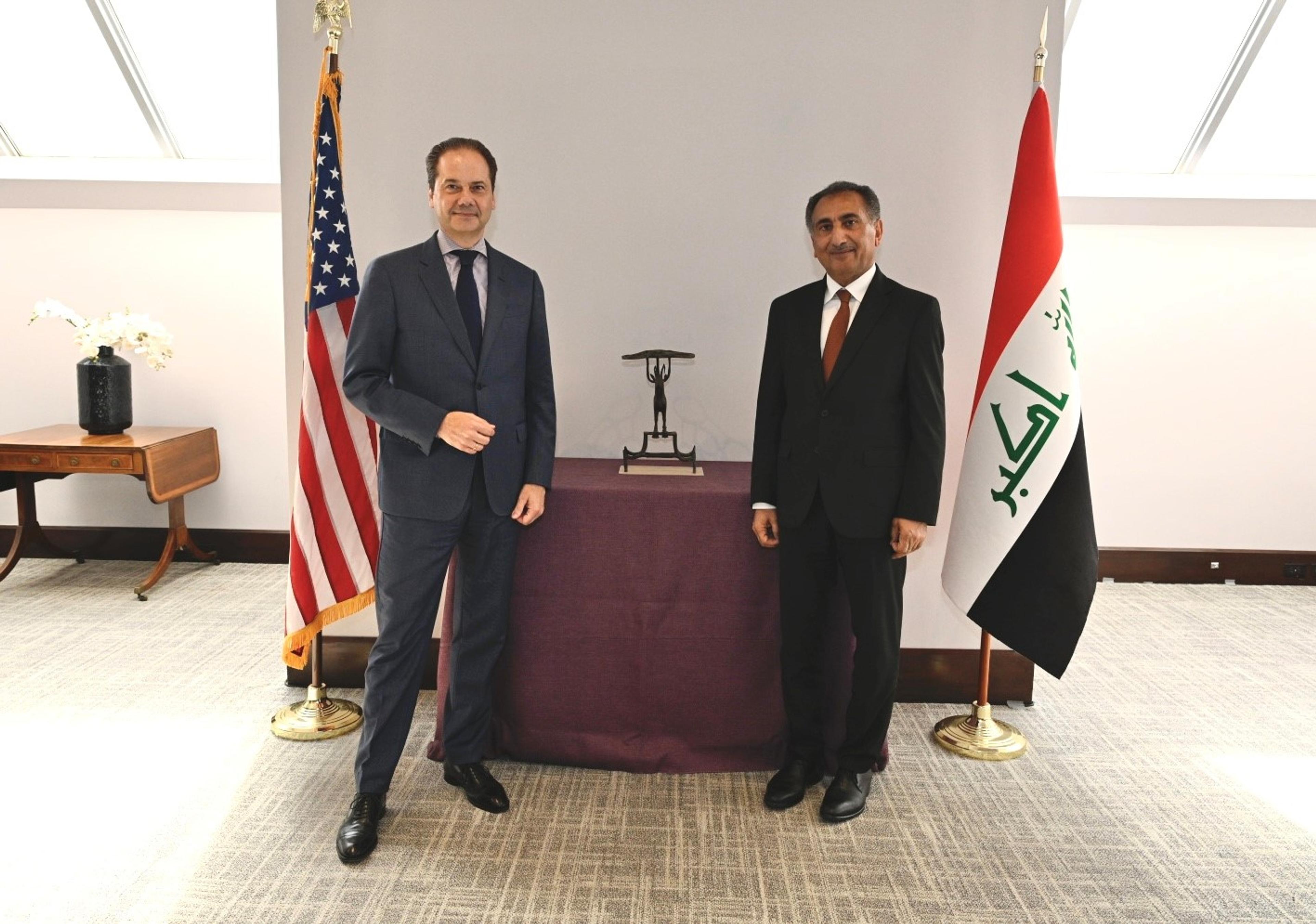The Met returns 4,500-Year-Old Statue of Ibex to Iraq

The Metropolitan Museum of Art and the Republic of Iraq announced today preliminary findings from a collaborative research project into a copper-alloy sculpture from ca. 2500 BCE, Vessel Stand with Ibex.
The ibex in the center of this extraordinary work of art is among the oldest known examples of the use of a clay core in casting a human or animal figure by direct lost wax casting—an innovative breakthrough that enabled the creation of large and complex metal sculptures and continues to be used by artists today. While later large-scale castings from the ancient world have been extensively studied, the much earlier examples from Mesopotamia have not been fully examined until now.
The Vessel Stand with Ibex was purchased by the Museum in 1974 and was displayed nearly continuously for decades. Recent provenance research by the Museum’s scholars established that the work rightfully belongs to the Republic of Iraq, prompting the Museum to reach out to H.E. Nazar Al Khirullah, Ambassador of the Republic of Iraq to the United States of America, and offer to return the work. In the course of subsequent discussions, The Met and Iraq agreed to jointly pursue research on the sculpture.

Max Hollein, The Met’s Director and CEO, and His Excellency Nazar Al Khirullah, Ambassador of the Republic of Iraq to the U.S., at The Metropolitan Museum of Art on September 30. (Photo by Paula Lobo, Courtesy of The Met)
“The Met is honored to collaborate with the Republic of Iraq on this research, advancing understanding of a historically significant technique which has impacted artmaking in cultures across the world,” said Max Hollein, The Met’s Director and CEO. “We are grateful to His Excellency Nazar Al Khirullah and his team at the Embassy—as well as many colleagues in Iraq—for our ongoing conversations and collaboration. We look forward to continuing our shared dedication to fostering knowledge and appreciation of Iraqi art and culture, particularly as we look ahead to the renovation and reopening of our galleries for the art of Ancient West Asia and Ancient Cyprus in 2027.
His Excellency Nazar Al Khirullah, Ambassador of the Republic of Iraq to the U.S., stated: “The return of the Ibex statue to Iraq is not merely a cultural event; it is an affirmation of our natural place as the cradle of civilization. This piece, crafted by our ancestors, carries the spirit and genius of Mesopotamia that helped shape human history. Its recovery does justice to Iraqi heritage and offers a renewed opportunity to present the richness of our culture to the world. These findings not only showcase the exceptional artistic and technical mastery of the makers of Mesopotamian civilization; they also underscore the enduring depth and significance of this civilization as a cornerstone of human history—revealing, for the first time, one of the earliest and most important artistic techniques used in the production of metal artifacts. We value Iraq’s partnership with U.S. governmental and non-governmental institutions—especially The Metropolitan Museum of Art—in advancing research that highlights the creativity of ancient Iraq and inspires future generations around the globe.”
Main Image: Vessel Stand with Ibex, ca. 2600–2350 BCE. Sumerian. Copper alloy, inlaid with shell (lambis truncata) and lapis lazuli
